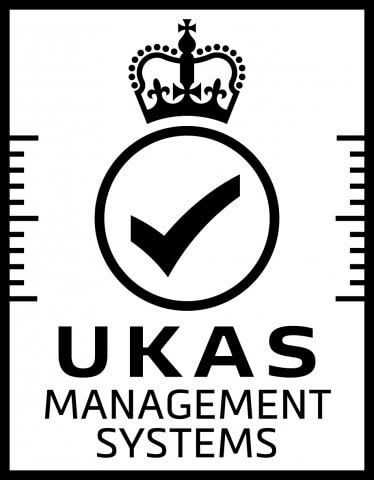For many women, large breasts are more than just a cosmetic concern. They can bring daily discomfort like back pain, shoulder grooves and skin irritation, the kind of symptoms that make even simple things such as walking, exercising, or finding clothes that fit a real struggle.
And it’s not just physical. Living with breasts that feel “too big” often affects confidence, posture, and even social life. That’s when breast reduction stops being about looks and becomes about health and quality of life.
So, when does surgery move from “want” to “need”? In this guide, we’ll break down the medical reasons breast reduction may be necessary, the symptoms doctors look for, and what insurance coverage in Ireland might involve.
What Causes Breasts to Grow Too Large?
Breast enlargement can happen for a variety of reasons, from genetics to hormonal changes. Understanding what causes breasts to grow too large helps identify when breast reduction may be necessary.
Genetics and Family History
Sometimes, it really does come down to the family tree. Genetics play a major role in determining breast size, just like they influence height, body shape, or hair type. If your mother, sisters, or close relatives have naturally large breasts, there’s a strong chance you may inherit the same trait.
It’s not about weight or lifestyle in these cases, it’s simply the way your body is programmed to develop. While genetics alone don’t make breast reduction medically necessary, they often set the stage for symptoms that do.
Hormonal Changes
Hormones can have a huge impact on breast size. During puberty, rising estrogen levels stimulate breast growth, and for some girls, this growth continues beyond what feels balanced for their frame. Later in life, pregnancy and breastfeeding often bring another surge, the breasts swell as milk glands expand and sometimes they don’t shrink back fully afterward.
Menopause can also play a role. Shifts in hormone levels may change how fat is stored in the body, leading to fuller or heavier breasts. These hormonal ups and downs are a normal part of life, but for some women, they can tip breast size into the range where health problems begin.
Weight Fluctuations
Breasts are made up of both glandular tissue and fat. When your weight changes, the fatty part of the breast often changes too. For some women, even small fluctuations on the scale can cause noticeable differences in breast size.
Weight gain can make breasts larger and heavier, on the other hand, weight loss doesn’t always bring them back down. Many women find their breasts stay large even after slimming down, leaving them with discomfort or sagging that affects daily life.
This is why breast size can feel unpredictable, it’s not always just about your current weight but how your body naturally stores fat.
Medications and Health Conditions
In some cases, breast growth is linked to underlying medical issues or certain medications. Conditions like hormonal imbalances, thyroid disorders, or rare syndromes such as gigantomastia can trigger excessive breast enlargement.
Certain medications, including hormone therapies, fertility treatments, or even some antidepressants, can also stimulate breast tissue growth. While not every woman reacts this way, for those who do, the increase in size can bring real physical discomfort.
Determining When Breast Reduction Is Medically Needed
When large breasts affect daily life, posture, or overall physical and mental health, breast reduction can be a necessary medical intervention.
Physical Symptoms That May Require Breast Reduction
Back, Neck, and Shoulder Pain
If you’ve ever carried a heavy backpack for too long, you know the strain it puts on your back and shoulders. Now imagine that weight sitting on your chest every single day. That’s what many women with very large breasts experience.
The pull on the upper body often leads to constant back pain, tension in the neck, and deep shoulder grooves from bra straps trying to hold up the weight. Over time, this can affect posture and even cause headaches.
For many Irish women, this is the main reason breast reduction becomes a medical conversation. It’s not about changing appearance but rather about finding relief from pain that’s interfering with daily life.
Skin Irritation and Rashes
Large breasts don’t just weigh you down, they can also trap heat and moisture under the folds of skin. For many women, this leads to constant chafing, rashes, or even painful skin infections. The skin can become red, itchy, and sore, especially during the warmer months or after exercise.
Even with careful hygiene and medicated creams, these issues often come back. Bra straps digging into the skin can make things worse, leaving grooves or even broken skin over time.
This is one of those hidden struggles that often isn’t talked about, but it’s a real medical reason why breast reduction may be necessary.
Posture Problems and Restricted Movement
When breasts are too large for your frame, standing tall and straight can feel almost impossible. The extra weight pulls the shoulders forward, creating a hunched posture over time. Many women don’t even notice how much their stance has changed until they start experiencing stiffness or joint pain.
Movement can also feel restricted. Activities like running, stretching, or even simple housework may become awkward or uncomfortable. For some women, this means avoiding exercise altogether, which only worsens the cycle of discomfort and health issues.
Mental and Emotional Impact of Large Breasts
Large breasts can affect more than just physical comfort, they often take a toll on mental and emotional well-being. Understanding these impacts highlights when breast reduction can be medically necessary.
Low Self-Esteem and Body Confidence
Living with breasts that feel “too big” doesn’t just affect your body, it can affect how you see yourself. Many women struggle with self-esteem, avoiding certain clothes or social situations because they feel uncomfortable with the size of their chest.
Comments from others, unwanted attention, or difficulty finding clothes that fit properly can all chip away at confidence. For some, this leads to a cycle of hiding, second-guessing, and feeling disconnected from their own body image.
Emotional Stress and Social Anxiety
For many women, having very large breasts means living with constant emotional pressure. It’s not only the physical strain but also the feeling of being noticed or judged for something that’s simply part of your body.
Some women avoid going out, others dread social settings, and even simple moments like shopping for clothes can become stressful. This type of anxiety builds up. Always worrying about what people might say or how they might stare can make daily life feel like a performance rather than something natural.
Over time, that stress chips away at mental health, leaving many women feeling isolated or unhappy.
Impact on Daily Life and Relationships
When breasts are too large, even the simplest parts of daily life can feel like a challenge. Many women avoid exercise because it’s uncomfortable, others struggle to find clothes that fit properly. Even sleep can be disrupted, with discomfort from trying to find a comfortable position.
Relationships can also be affected. Some women feel self-conscious with their partners or avoid intimacy because they’re unhappy with how their body looks or feels. Over time, this creates distance and frustration that extends far beyond the physical.
Auralia Surgeon Tip:
“The mental and emotional burden of large breasts is often underestimated. But your well-being isn’t just physical, your confidence, comfort, and mental health matter just as much.”
Can Breast Reduction Be Covered by Insurance in Ireland?
When symptoms like chronic back pain, skin infections, or shoulder grooves are clearly documented, breast reduction can be considered medically necessary. In these cases, private insurance may cover part or all of the surgery, depending on the provider and policy.
To qualify, patients usually need medical evidence from their GP or specialist showing that the procedure is required for health reasons, not just appearance.
Public coverage through the HSE is more limited and often involves long waiting lists, while private insurance offers faster access if criteria are met.
If you’re considering this route, the best step is to check directly with your insurance provider and discuss your symptoms with a surgeon who can prepare the right documentation.
Frequently Asked Questions (FAQs)
If your breasts are causing physical problems like chronic back or shoulder pain, deep bra strap grooves, recurring rashes, or posture issues, breast reduction may be considered medically necessary. The best way to know for sure is to consult with your GP or a specialist, who can assess your symptoms and provide medical documentation.
It depends. Private insurance may cover the procedure if you meet certain criteria and provide medical evidence of symptoms. The HSE may also offer coverage, but waiting lists are long and approval is limited. Your surgeon and GP can help you prepare the right documents for insurance providers.
Every insurance company is different, but many have specific criteria based on the weight or volume of tissue removed. Your surgeon can estimate this during consultation and explain what your provider requires.
Yes, when performed by experienced, board-certified surgeons, breast reduction is considered a safe and effective procedure. Like all surgeries, it carries some risks, but for women struggling with physical or emotional symptoms, the benefits usually far outweigh them.
The surgical technique is the primary factor. While no procedure can guarantee a full milk supply, methods that avoid a free nipple graft offer the best chance. In these cases, the glandular tissue is reshaped and reduced, but the critical connections for milk production are often preserved. The specific approach is tailored to your anatomy and the degree of reduction needed, all of which influence the potential for breastfeeding after surgery.
It’s Time to Put Your Comfort First
If you are tired of the pain, the rashes and the frustration, you can book your free consultation with one of Auralia‘s surgeons today and take the first step toward feeling lighter, healthier, and more comfortable in your own body.
Don’t wait any longer. Book your consultation today and take the first step toward real relief.





